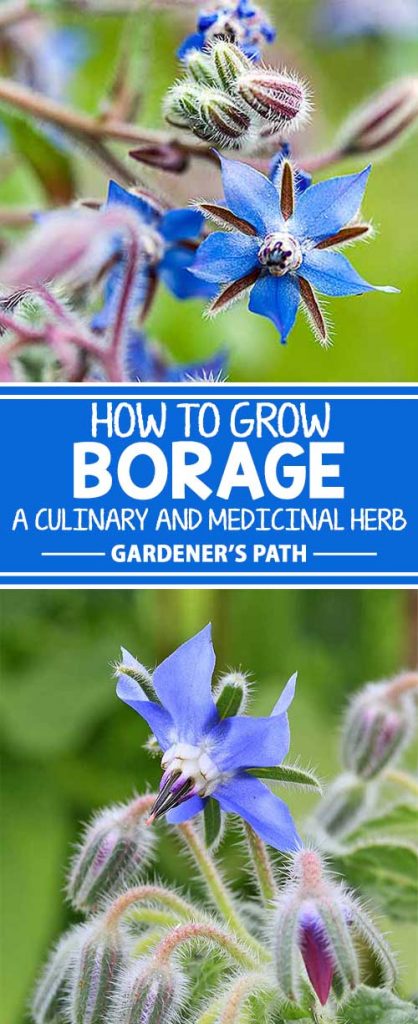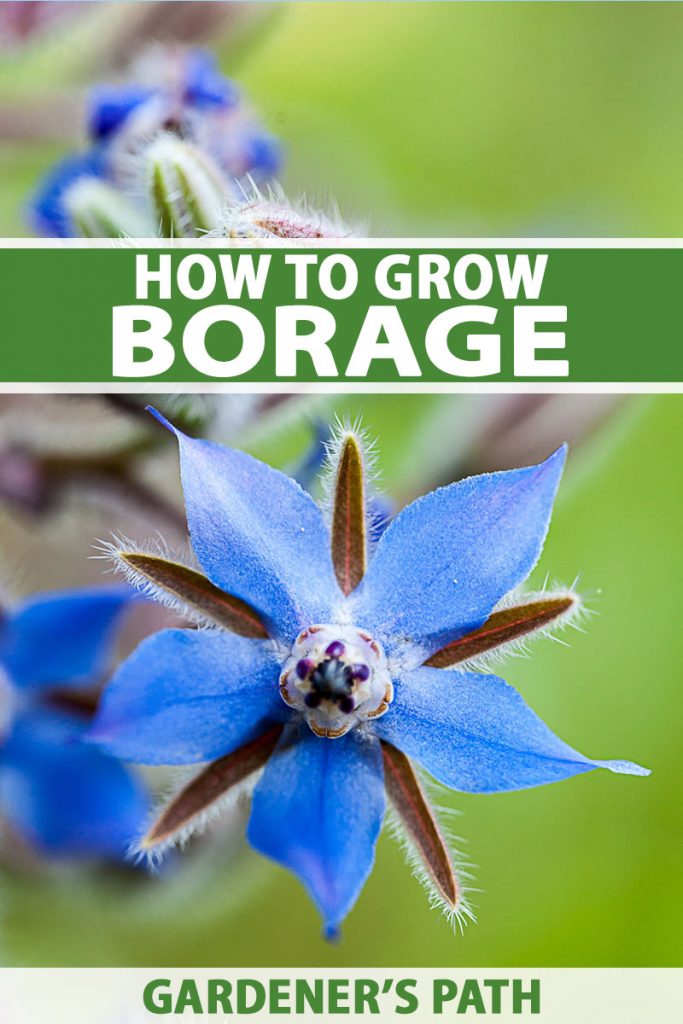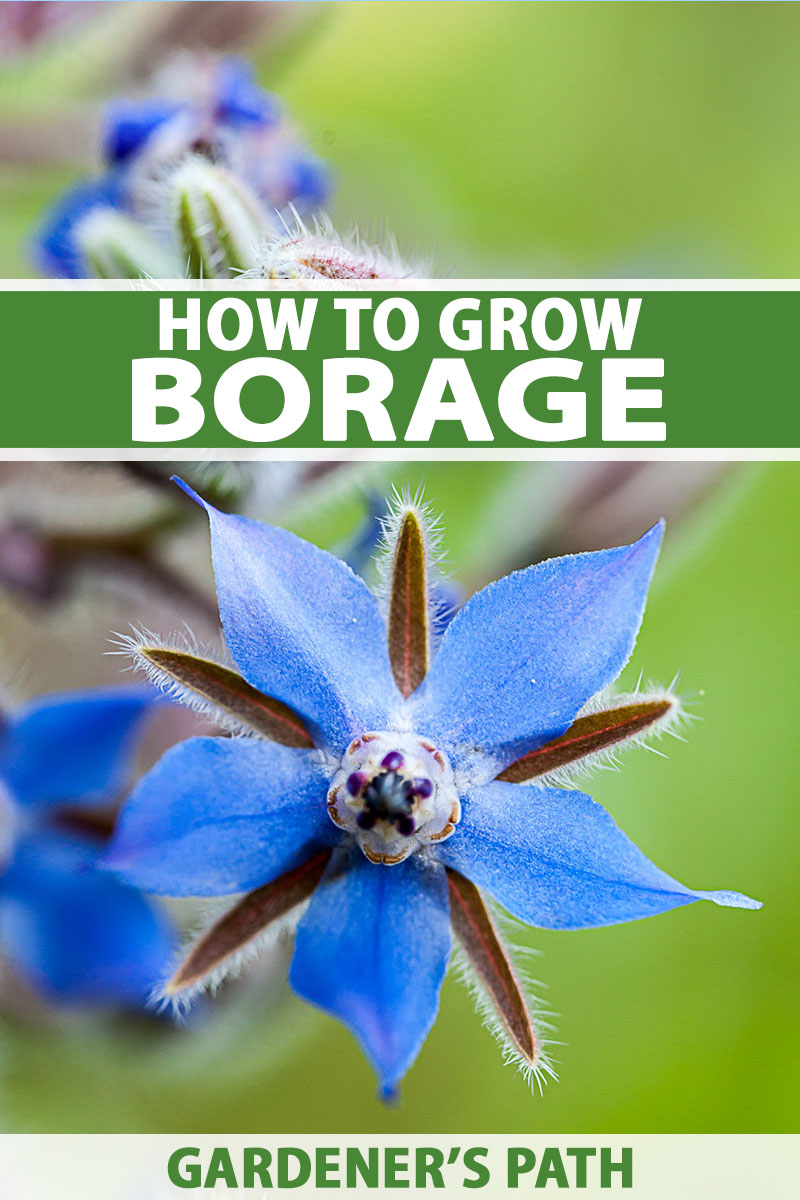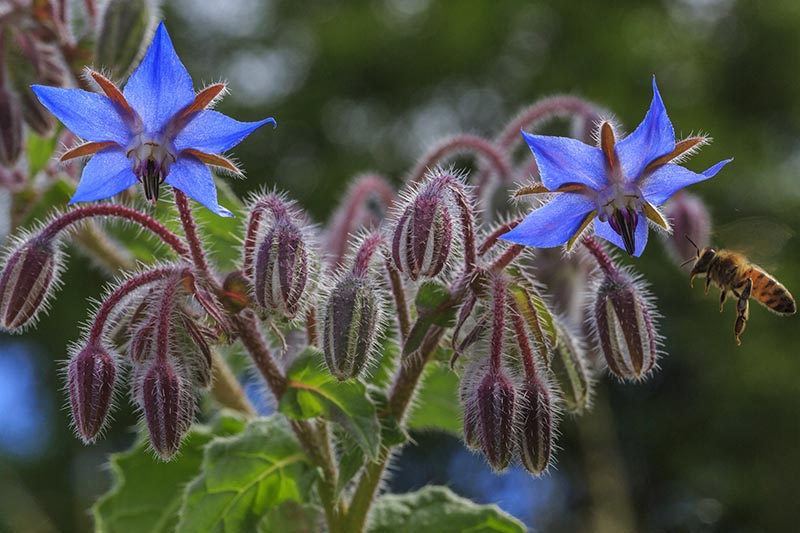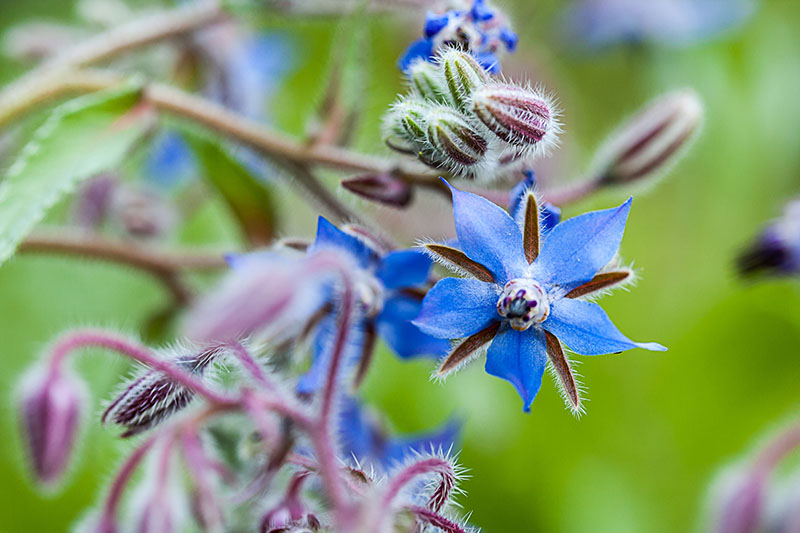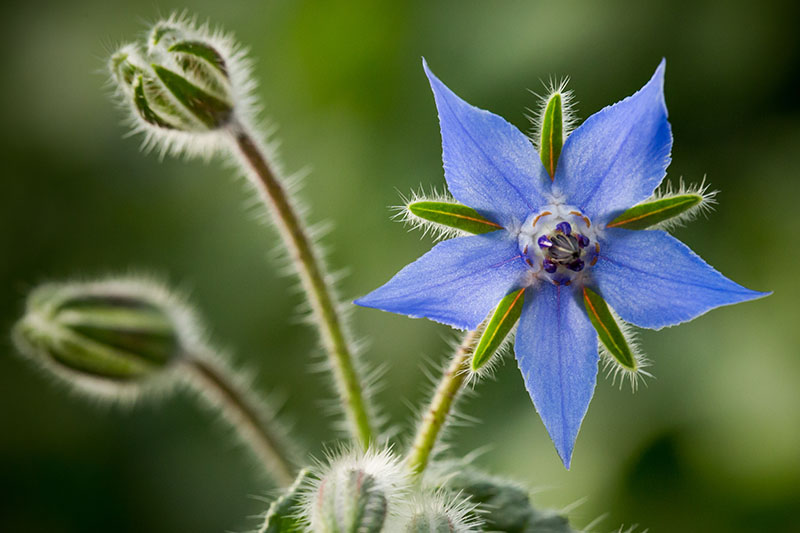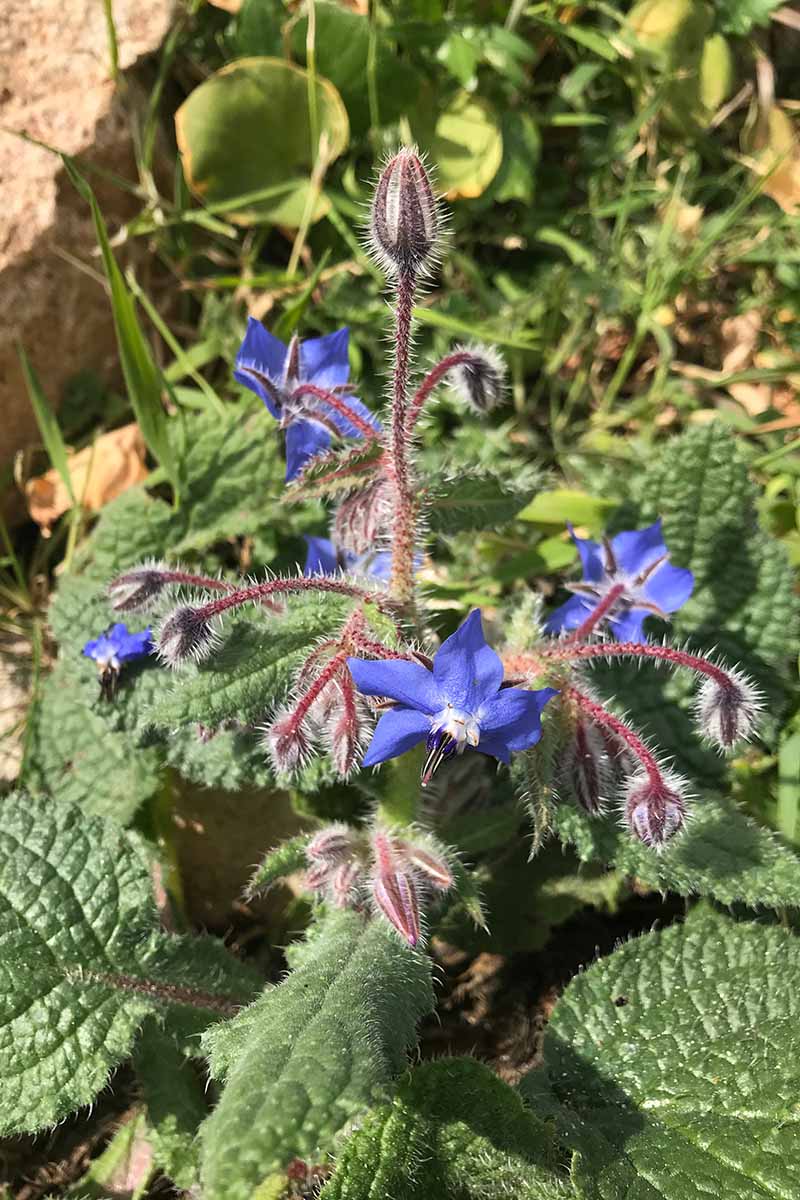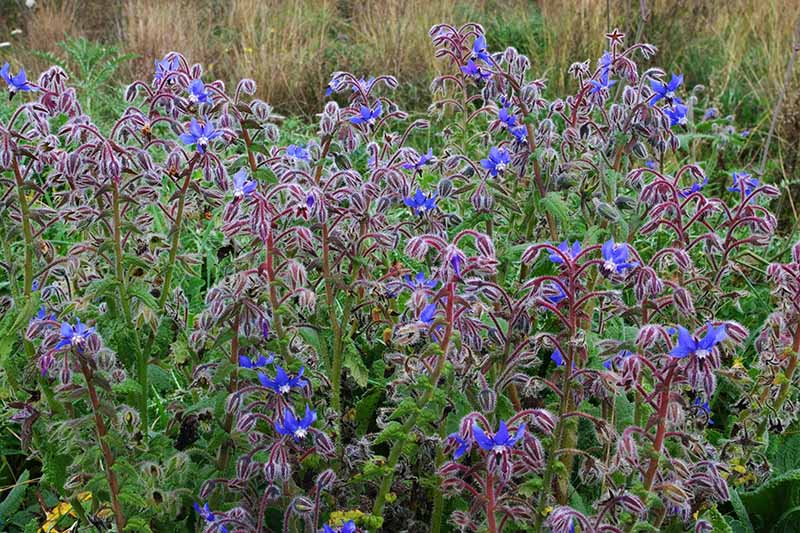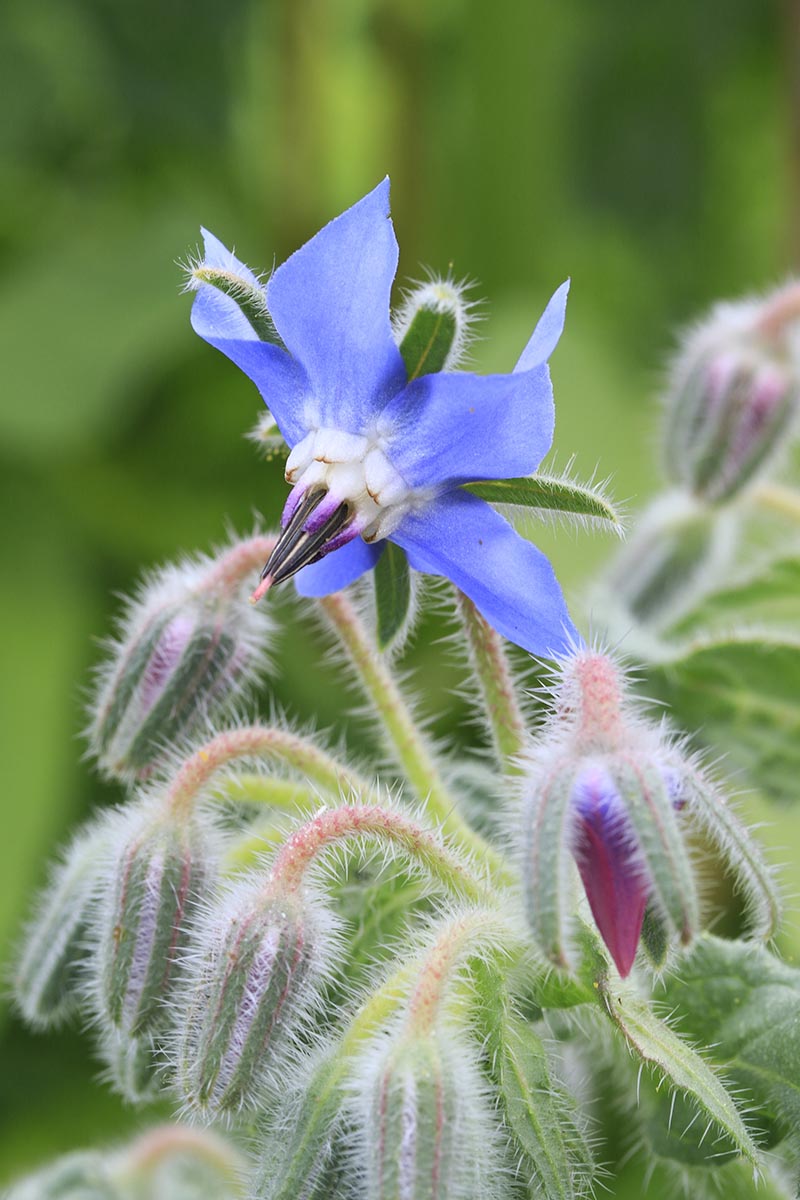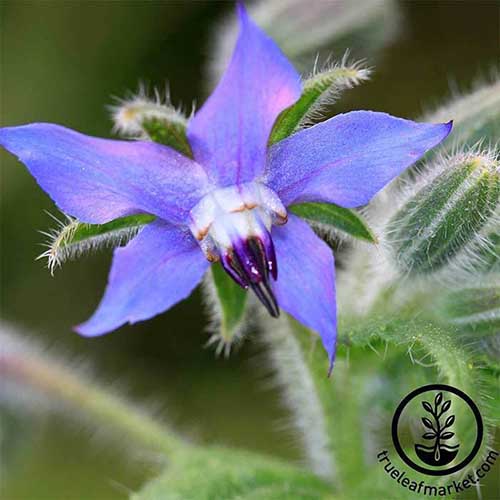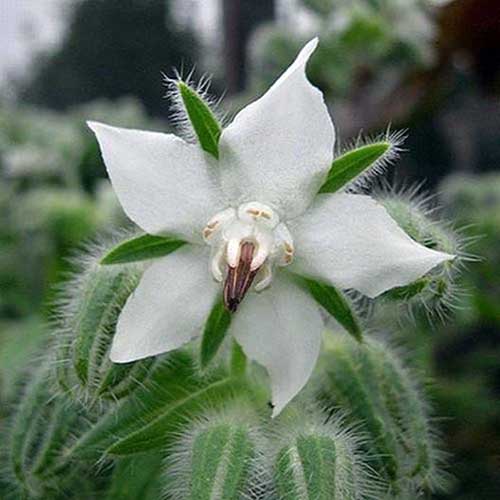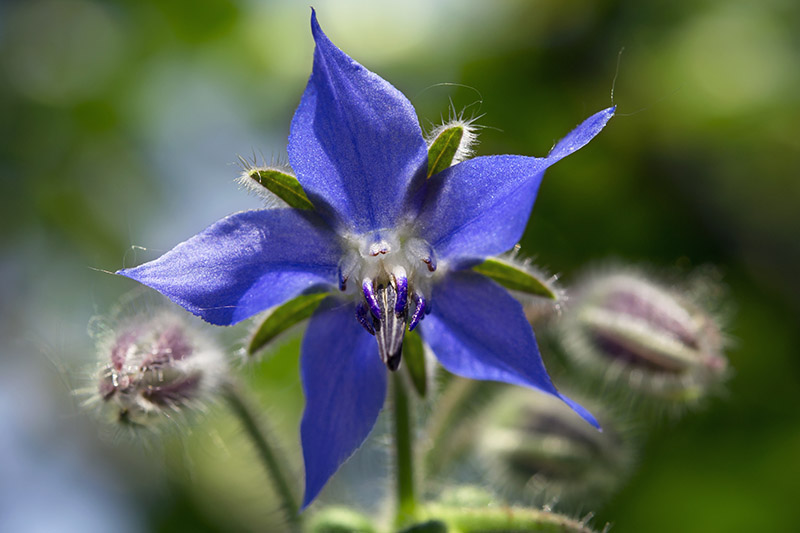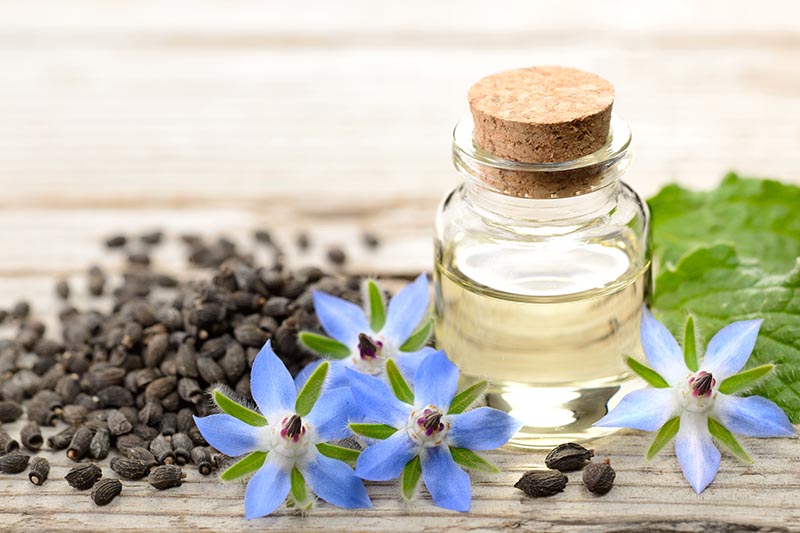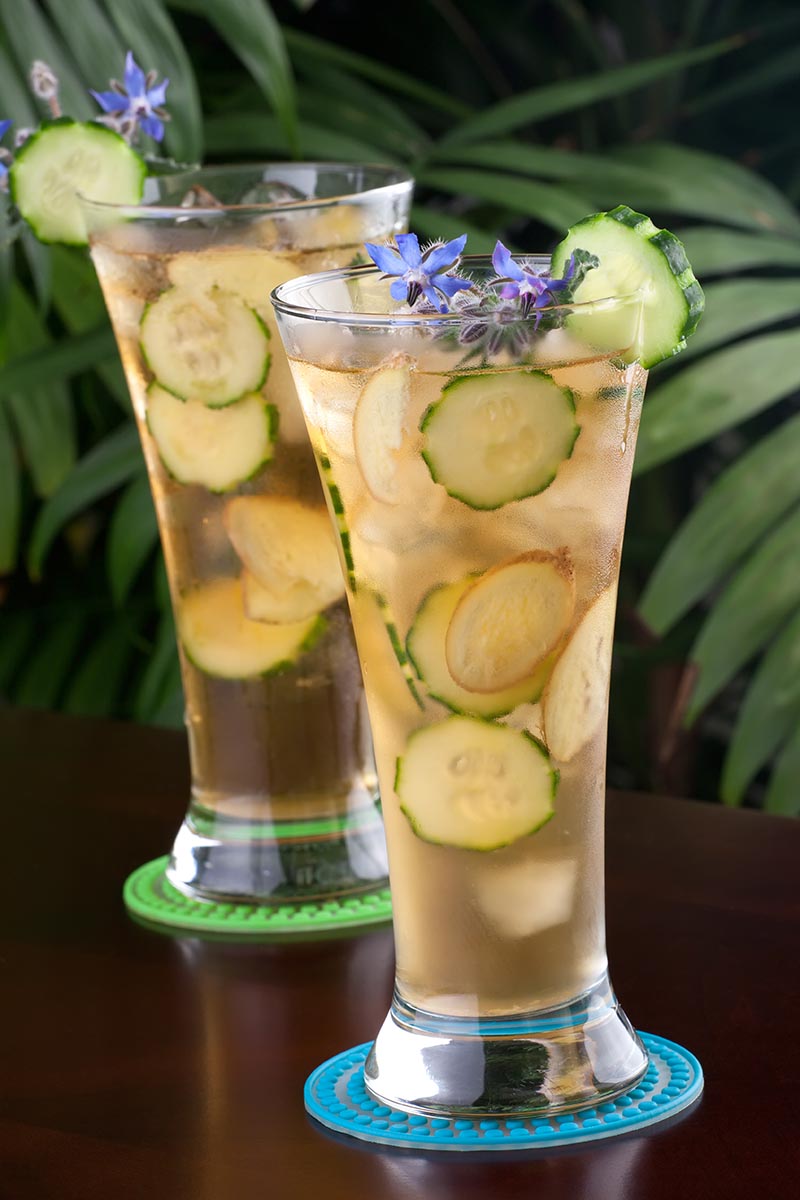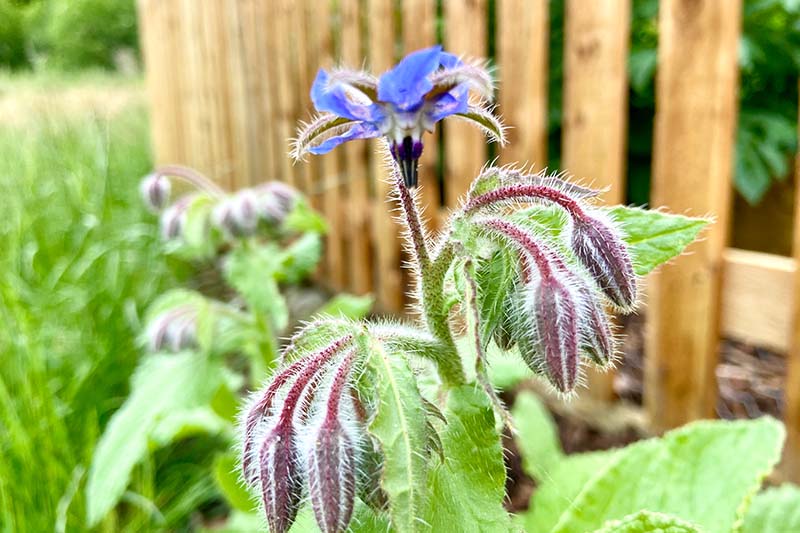It’s a member of the Boraginaceae family of plants, which includes forget-me-not and heliotrope. Naturalized in the United States, it grows in a wild and weedy fashion, sporting its signature blue star blossoms as well as fuzzy leaves, stems, and drooping buds. In addition to the botanical species, there are cultivated varieties available in both blue and white. We link to vendors to help you find relevant products. If you buy from one of our links, we may earn a commission. Note that its fuzzy texture may cause a skin reaction in sensitive people. If you are prone to allergies, wear gloves when you handle it.
Cultivation and History
According to experts at the Flower Essence Society, B. officinalis likely originated in Syria. Today it is naturalized throughout Europe and the United States.
There are two literary references from the 1500s to an herb believed to be borage: there is a forgetfulness-inducing herb in Homer’s Odyssey, and a mood elevator in Dioscorides’ De Materia Medica. The leaves and flowers have long been used in the eastern Mediterranean region as potherbs and drink garnishes. They also have a history of use in herbal remedies to address conditions ranging from respiratory issues to adrenal problems. The leaves have an aroma reminiscent of cucumber, and a rather salty flavor. The flowers are sweet, like honey.
The seeds contain an oil prized for its high gamma linoleic acid (GLA) content. This fatty acid is believed to be antigenotoxic and anti-inflammatory. Today it is sold as a health supplement. However, please note: in addition to being a potential skin irritant, consumption of this herb may cause adverse reactions. Borage contains low concentrations of unsaturated pyrrolizidine alkaloids that are hepatotoxic, or potentially damaging to the liver. If you have a medical condition, please consult a physician or other healthcare professional before consumption, to avoid drug interactions.
Although each stunning flower blooms for only a day, starry B.officinalis opens continually during the summer months, making it a rich nectar and pollen source for honeybees. To encourage optimal flower production, deadhead spent blooms frequently, or harvest them fresh for use as a garnish in salads or drinks. An annual by definition, B. officinalis behaves like a perennial. It is a self-sower that ensures its future by dropping seeds at season’s end that germinate the following spring. Ideal conditions for cultivation include a full sun to part shade location and average, well-draining soil. Mature dimensions may reach three feet tall and up to 18 inches wide.
Propagation
The best way to start growing B. oficinalis is from seed. Seeds have a high germination rate, and sowing them couldn’t be easier. Self-sowing at season’s end ensures that a one-time seed investment repays the grower for years to come.
It’s easy to start new plants from seed by direct sowing outdoors in spring after the last average frost date has passed. Alternatively, you can start seeds indoors a month before the last frost date and transplant seedlings to the garden.
How to Grow
This is an herb that delivers dynamic growth when you offer ideal conditions. Provide a location with full sun. Plants tolerate part shade, but may not produce as many flowers without an abundance of sunshine.
The soil may be average, provided it drains well. To improve the drainage of compact, clay-like soil, amend it with organically-rich material like leaf mulch or compost, as well as ordinary builder’s sand. Note that the addition of organic matter may slightly increase soil acidity. The ideal soil pH is between 4.8 and 8.3. This is a wide range, and it’s very likely that your soil is within bounds. To know for sure, you may contact your local agricultural extension office to conduct a soil test. Work the soil to a depth of 10 to 12 inches, until it is crumbly. Sow seeds 1/4 to 1/2 inch deep. Maintain even moisture during germination and while plants are becoming established.
Once it is established in the garden, you may let the soil dry out between waterings. This species has above average drought tolerance. You can apply a layer of mulch to aid in water retention and inhibit the growth of weeds. Herbs also make great container plants. Select a pot that is at least 12 inches wide and deep to accommodate root spread and mature dimensions. Be sure it has adequate drainage holes, and fill it with a well-draining potting medium. A critical aspect of container gardening is to remember is that pots dry out quicker than ground soil, so be vigilant.
Growing Tips
Plant in full sun for an abundance of blooms. Average soil is fine, provided it drains well. Amend the soil as needed with compost, leaf mulch, or even builder’s sand to loosen it and improve drainage.
Cultivars to Select
B. officinalis Blue species B. officinalis seeds are available from True Leaf Market in 2-gram, 1-ounce, 4-ounce, 1-pound, and 5-pound packages.
B. officinalis ‘Alba’ White cultivated B. officinalis ‘Alba’ seeds are available from Eden Brothers.
Managing Pests and Disease
B. officinalis is not prone to problems with insects or disease. It is valued in the garden because it attracts beneficial insects that feed on many pests, making it a great companion plant. However, if its growing environment is less than ideal, trouble may arise. The fungal infections most likely to infect plants when conditions are too wet include: leaf spot, powdery mildew, root rot, and stem rot. To avoid leaf spot and powdery mildew, be sure to space plants the recommended nine to 18 inches apart, depending upon their expected mature widths. This helps maintain sufficient air circulation and inhibits the buildup of excess moisture and humidity. Root and stem rot begin in oversaturated soil. Avoidance measures include sowing in soil that drains well, and not overwatering. In the event of a fungal outbreak, remove affected foliage or entire plants and discard them in the trash. You may also apply a food-safe fungicide according to package instructions. It’s unlikely that your plants will be bothered by deer or rabbits, as the aromatic leaves and fuzzy texture don’t seem to appeal to them.
Harvesting
Keep in mind that the fuzzy texture of borage may cause skin irritation, and consumption may cause adverse reactions. To pick flowers, grasp the brownish center and pull gently to release them from the green calyxes below.
You can harvest the leaves when they are smooth young sprouts, as “microgreens,” or at a later stage when they are larger and fuzzier. To harvest the leaves, use your thumb nail to pinch them off at the base. B. officinalis is an “indeterminate” grower that may be harvested many times. You may also collect seeds after the flowers have finished blooming. When a flower is brown and withered, hold a bag beneath it, and rub the dry petals with your thumb and forefinger to release the seeds into the bag. Store the seeds in a labeled envelope in a cool, dry place for up to one year to sow next season.
Use the leaves and flowers when they are fresh, as soon as possible after harvesting. Add a few greens to salads, or to the soup pot. Or you can try freezing the flowers in ice cubes for an extra special drink attraction. You can candy the star-like blossoms for decorative cake embellishments. Find the recipe now on our sister site, Foodal.
Best Garden Uses
While I’m partial to native species, I feel this plant has much to offer. Do you have a strawberry patch, squash mound, or row of tomato cages? Plant some borage between these plants to ward off common pests. Just remember you’re sowing a vigorous grower, and don’t let it take over!
And if you have fallow land waiting for a cool-weather crop, you can sow B. officinalis as a cover crop to help prevent erosion, retain moisture, and inhibit weed growth. Plow this cover crop under for fresh green manure prior to planting your veggies. With its ability to attract a host of beneficial pollinators, there’s no reason to confine borage to the veggie or herb garden. In addition to its culinary and medicinal uses, it makes a charming ornamental. How about sowing it in a sunny meadow with room to self-sow and spread?
Quick Reference Growing Guide
A Versatile Companion
Borage is ready and willing to take up residence in your yard. Will you make room for it this year? Is this an herb that you sow for medicinal or culinary use? Let us know in the comments section below. If you enjoy growing herbs in your garden, check out these guides next:
How to Grow and Care for Spearmint Plants How to Grow Oregano How to Plant and Grow Marjoram in Your Herb Garden
© Ask the Experts, LLC. ALL RIGHTS RESERVED. See our TOS for more details. Originally published August 2, 2017. Last updated July 9, 2020. Product photos via Eden Brothers and True Leaf Market. Uncredited photos: Shutterstock. The staff at Gardener’s Path are not medical professionals and this article should not be construed as medical advice intended to assess, diagnose, prescribe, or promise cure. Gardener’s Path and Ask the Experts, LLC assume no liability for the use or misuse of the material presented above. Always consult with a medical professional before changing your diet or using plant-based remedies or supplements for health and wellness.
